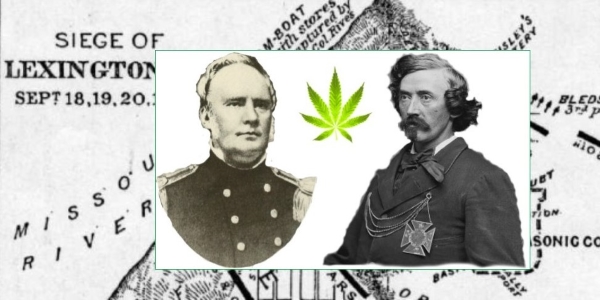Colonel Mulligan’s face turned grim when he saw the enemy advancing from behind heavy bales of hemp. This battle, he knew, could be his last.
Summoned just days earlier, Mulligan was tasked with fortifying the Union Army’s position at Lexington, Missouri in the third week of September, 1861. It was a seemingly impossible mission from the start; the Colonel’s men were outnumbered by more than 3 to 1.
In command of the Union Army’s Illinois 23rd Volunteer Infantry Regiment, Colonel Mulligan’s forces numbered around 3,500 men and just a handful of cannons. The enemy advancing behind the hemp bales numbered somewhere between 12,000 and 15,000 strong, with considerably more artillery.
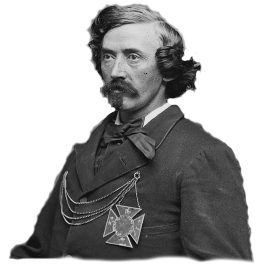
But now, while advancing under the cover of hemp bales, the battle quickly turned in favor of the mightier Confederate Army.
Comprised of at least 12,000 members of the Missouri State Guard, the Confederates were under the command of a proven and capable man; Major General Sterling Price.
Already a powerful politician and veteran war hero, General Price had served as Governor of New Mexico and Governor of Missouri, as well as serving in the Missouri House of Representatives and in the United States Congress. Price also fought in the Mexican-American War. He looked the role of power; clean-shaven with well-seasoned wintry hair and a stern face, he was the type of man who could lead armies or govern a people.
In fact, it was Price himself who had organized and mustered the Missouri State Guard in May of that year. He and his troops then earned fame for defeating the Federal Army at Wilson’s Creek by summer’s end, and they were still feeling the elation from that key victory. It spurred them on.
Major General Price was not a man to be trifled with, but he recognized that Colonel Mulligan was thoroughly entrenched and doggedly determined not to be routed. Mulligan had built extensive fortifications and strategically commanded the stretch of land rising into Lexington from within a defunct college. Word had it that Mulligan was over-confident and underestimated the size of Price’s army, figuring them to only number in the hundreds.
But Price wasn’t taking any chances to hearsay.
Nearly 20 years Mulligan’s senior, Major General Price began to lay siege to Colonel Mulligan’s position on September 18th, although the two armies had already been skirmishing for days; testing each other and probing for weaknesses.

Harris led the 2nd Division to surrounding warehouses and farms and began seizing bales of hemp against the objection of locals. Despite regional sympathy for the Confederate cause, growers were resistant to the seizures of the bales because the local economy depended on the hemp as a source of material for rope and clothing.
But the Southern Generals had other ideas for the hemp.
To be used as a mobile breastworks in the same fashion as was used in New Orleans by the Confederates with cotton bales, the idea was to use the hemp bales as modular cover to advance on Mulligan’s entrenched forces. The Confederates gambled that the bales of hemp were dense enough to absorb any bullets, shot and cannon fire that the Union soldiers could muster, allowing the Confederates to safely encroach on the Northerners’ fortified positions.
But Price and Harris also knew that the hemp bales would need to be wetted in order to avoid incineration under fire from Colonel Mulligan’s rifles and cannons. A well-placed bit of heated shot from Colonel Mulligan’s men could obliterate the dry hempen fortifications in seconds, so the Southern generals ordered their men to soak the bales in the Missouri River; a blunder that cost Price a valuable chunk of time.
The round hemp bales were massive at 5-6’ tall and almost as wide, causing much difficulty for Harris’ 2nd Division, who eventually collapsed in exhaustion, unable to move the bales into a defendable position while wet.
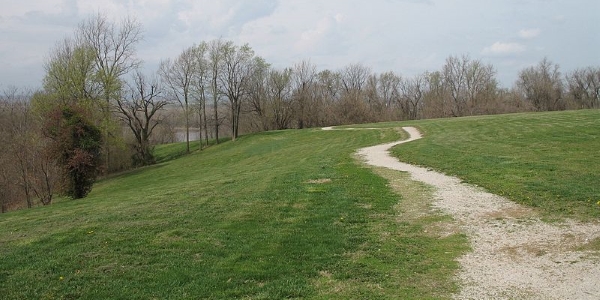
Meanwhile, the Union soldiers under Colonel Mulligan were slowly losing ground against withering fire from the Southerners. By the end of the day on September 18th, Mulligan and his officers ordered their men to retreat back into the fortifications around the college after Major General Price and his soldiers retook the Anderson house field hospital and began fortifying that position with the hemp bales.
On the morning of September 19th General Harris adjusted tactics and ordered his men to move the hempen breastworks into position, then wet them. The hemp bale breastwork then became a much more efficient mobile cover. The Confederates quickly assembled additional sections of the hempen breastwork, which extended out in wings on each side of the Anderson house.
The Confederate forces then redoubled their efforts, pushing the Union soldiers deeper into their fortifications. Mulligan’s men fought bravely and launched a hellfire of bullets and cannon shot at the Southerners, but from behind the hemp bales General Price’s men returned equal fire with nearly complete safety. Knowing it was probably futile, Colonel Mulligan ordered red-hot cannot shot to be directed into the bales, but Price’s men had soaked them thoroughly enough that the heated large-caliber shot had no effect.
Undoubtedly the irony of the wet hemp bales was not lost on Mulligan and his regiment. While Major General Price’s men dumped hundreds of gallons of water from the Missouri River onto the hemp bales to keep them from burning, Colonel Mulligan, his officers, soldiers and horses were suffering from severe dehydration. The Confederate forces had completely cut off their water supplies days earlier and had snipers positioned to kill any Union troops that dared leave the fortifications to procure water. Major General Price was using control of water not only to choke out the Northerners, but also to render their firepower radically ineffective.
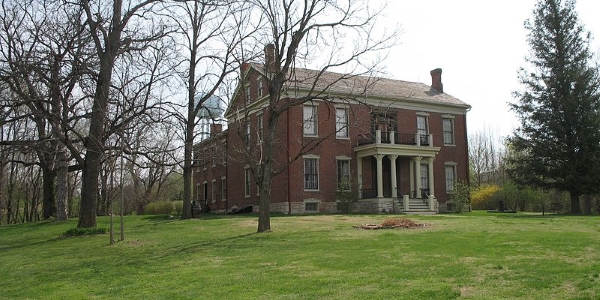
Thirsty and trapped in his headquarters in the abandoned college, Colonel Mulligan staunchly ordered his men to defend their positions and waited for reinforcements that never came. He stationed a young volunteer in the attic spaces to remove heated shells before they could ignite the college buildings. He sent a woman to collect water and she returned with several canteens full; the Confederates allowed her to quell the thirst of just a few. Mulligan repeatedly sent his men on daring missions to break the advance of General Price’s troops.
But the Confederate Army marched forward undeterred. Confident in the protection offered by the hemp bales, the Southerners slowly pushed their lines forward, rolling the hemp breastwork closer and closer to the Union position. Soon the Southerners were close enough that Mulligan’s men could see the individual stalks of the hemp bales, and the intensity of the battle increased as the Federal Army realized with alarm that the enemy would soon be upon them.
By the evening of the 19th, the Union stronghold was in trouble. Nevertheless, even with no water, dwindling ammunition and while sustaining relentless Confederate fire, Colonel Mulligan was able to stir the resolve of his men enough that they continued to put up fierce resistance to General Price’s sustained attack.
That night, under Major General Price’s command the hemp wings were quickly extended to eventually protect several hundred Southern soldiers at once. The Southerners rolled the hempen breastworks forward until they were virtually at the door to the college where the defenders waited with the last of their ammunition, and then both sides waited for daybreak.
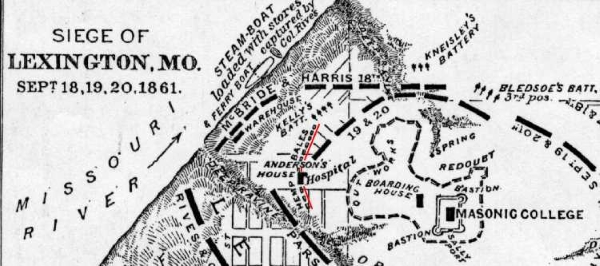
When the sun rose over Lexington on September 20, it was clear that the defeat of the Union forces was imminent. Major General Price’s army had advanced behind the hemp bales overnight to within spitting distance of the front, while encircling the Northerners on either side of the college. Even to the untrained eye, it looked like a slaughter was about to occur.
From the safety of the hempen breastworks, the Confederates opened fire directly on the Union line with devastating effect. Horrific injuries and casualties mounted, but Mulligan ordered his men to stand their ground and fight on. What followed was some of the most intense fighting of the American Civil War. In fact, the battle was so intense that when a white flag was finally flown at around 10 in the morning, there was a great deal of confusion. Major General Price asked if Colonel Mulligan was surrendering, but Mulligan angrily responded that he thought it was Price who was surrendering. Mulligan, with his piercing eyes and wild, wind-swept curls circling his head, was not joking.
But alas, it was Mulligan’s junior officers who had sent up the white flag when they finally felt the battle was unwinnable. Mulligan fervently disagreed and called a Council of War meeting, where he was subsequently outvoted by his fellow officers, who were in favor of unconditional surrender. Outvoted and outmaneuvered, Colonel Mulligan agreed to surrender, and by 2pm the Union troops had been debriefed and disarmed. Mulligan and his men surrendered their weapons, stacking them in piles near the hemp bales that had been used in their defeat.
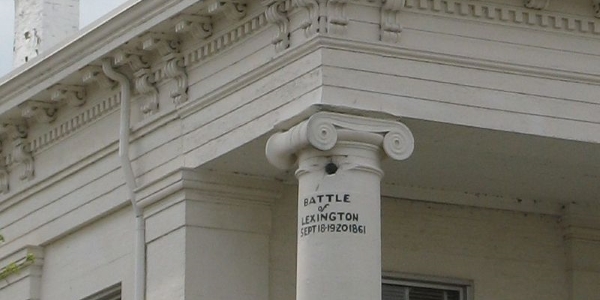
And with that, the Union army was routed in what was a major victory and morale-booster for the Confederates during the early days of the Civil War. Mulligan and his men were taken captive but were treated well and ultimately agreed to a parole and transfer – a practice where captive enemy soldiers were allowed to return to a different front in the war with the promise that they would not engage in fighting again until a swap could be made for the victor’s men held in captivity elsewhere. In fact, Major General Price was so impressed with Colonel Mulligan’s leadership and determination during the battle for Lexington that he gave the man his own horse and buggy to safely return to the frontlines.
This courtesy of war meant that Colonel Mulligan would go on to fight in multiple battles of the American Civil War, and was still fighting with segments of his original 23rd Illinois Volunteer Infantry Regiment when he famously quipped the line;
Lay me down and save the flag.
Those words, uttered while mortally wounded on the battlefield in 1864, were among his last.
Major General Price would also go on to fight prolifically throughout the rest of the war, but the Battle of Hemp Bales would be his crowning glory, and his ingenuity on the battlefield is a weed deed that adds yet one more item to the long list of constructive uses of hemp:
Military fortifications.
REFERENCES:
Information about the Civil War Battle of Lexington, also known as the Battle of the Hemp Bales Hempology.org: The Study of Hemp
First Battle of Lexington (or “Battle of the Hemp Bales”) Civil War on the Wester Border Encyclopedia entry by Terry Beckenbaugh, U.S. Army Command and General Staff College http://www.civilwaronthewesternborder.org/content/battle-lexington
James A Mulligan and the Western Irish Brigade, Paul Winslow for The Turner Brigade Missouri Volunteers http://turnerbrigade.org/history/mulligan/
General Sterling Price – The Civil War in Missouri
First Battle of Lexington Wikipedia https://en.wikipedia.org/wiki/First_Battle_of_Lexington
PHOTOGRAPH AND IMAGE CREDITS:
Credit for Anderson house: “Anderson-house” by Americasroof – en:First Battle of Lexington. Licensed under CC BY-SA 2.5 via Commons
“SterlingPrice” by Unknown – File from The Photographic History of The Civil War in Ten Volumes: Volume Two, Two Years of Grim War. The Review of Reviews Co., New York. 1911. p. 148.. Licensed under Public Domain via Commons – https://commons.wikimedia.org/wiki/File:SterlingPrice.jpg#/media/File:SterlingPrice.jpg
“James A. Mulligan” by Unknown – Library of Congress, Reproduction Number: LC-DIG-cwpb-06232 This image is available from the United States Library of Congress’s Prints and Photographs division under the digital ID cwpb.06232. Licensed under Public Domain via Commons
Cannon shot in courthouse: “Lexington-courthouse” by Americasroof – uploaded from en.wiki. Licensed under CC BY-SA 2.5 via Commons –
“Lexington-field1”. Licensed under CC BY-SA 2.5 via Wikipedia –
- Barcelona Cannabis Club Review: Green Age - March 23, 2022
- Things to do after Smoking Weed in Barcelona - March 2, 2022
- 9 Things You Need to Know about Cannabis Clubs in Madrid - February 15, 2022


